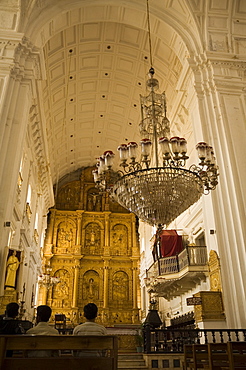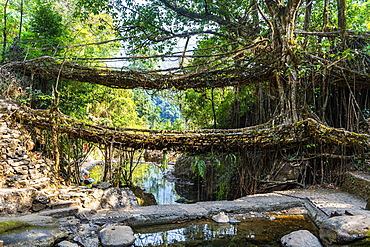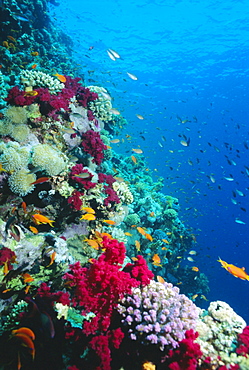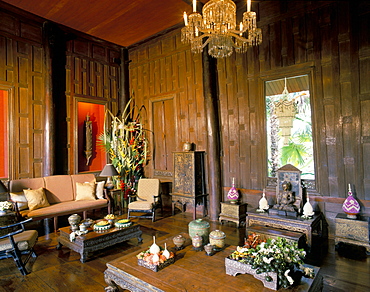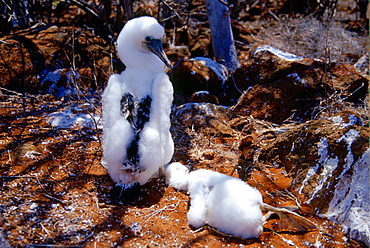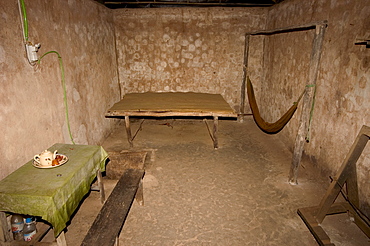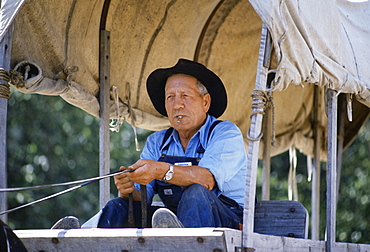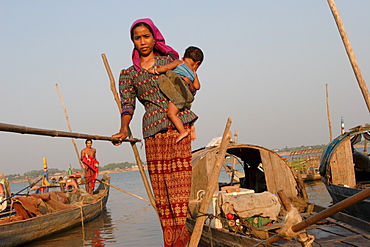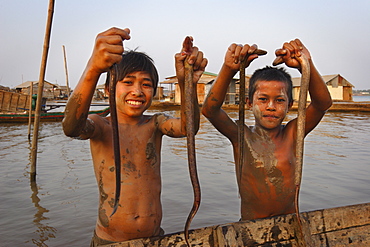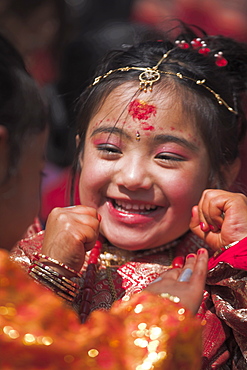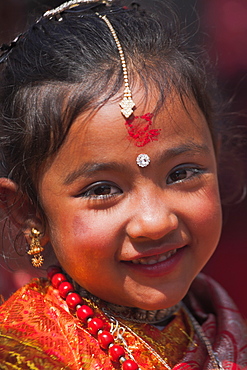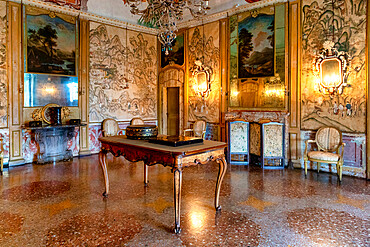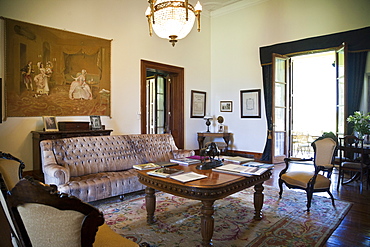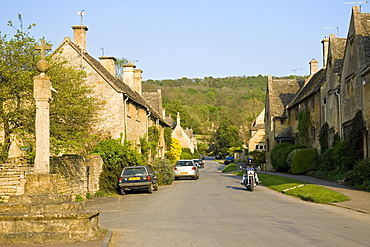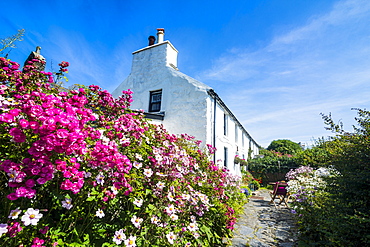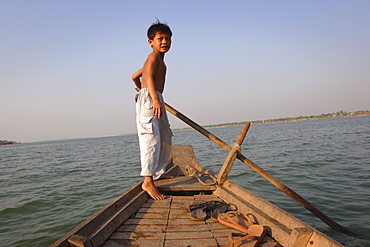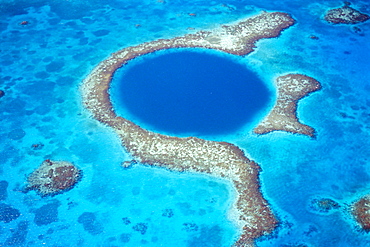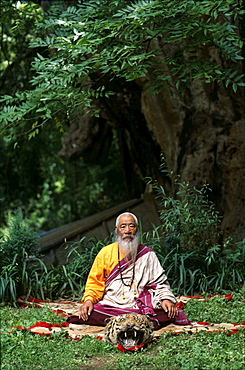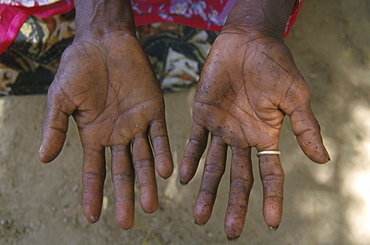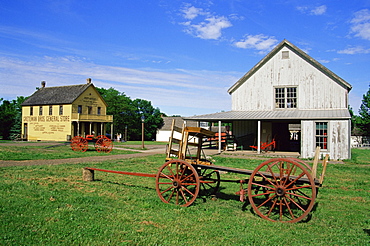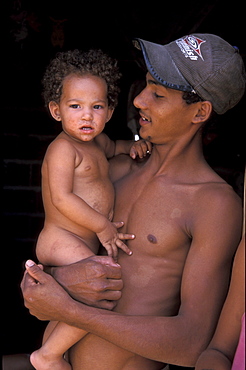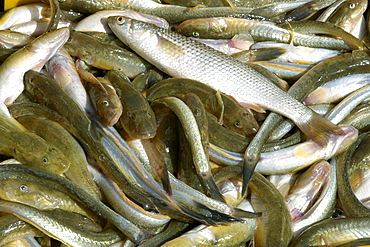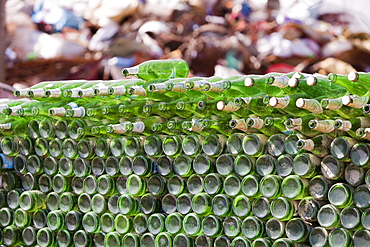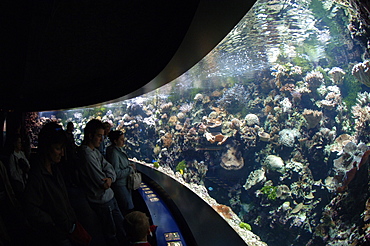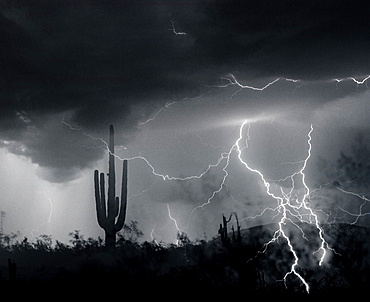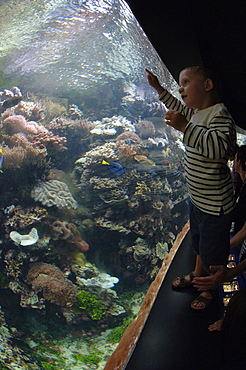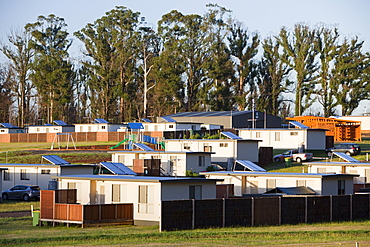Results
« Previous 1 2 3 4
358 results found
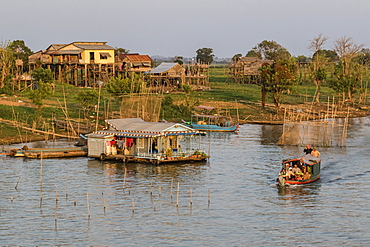
River family living on the Tonle Sap River in Kampong Chhnang, Cambodia, Indochina, Southeast Asia, Asia
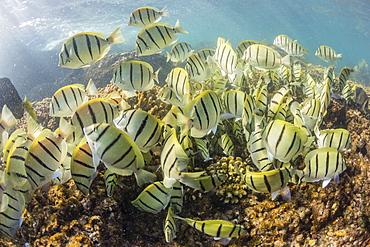
A large school of convict tang (Acanthurus triostegus) on the only living reef in the Sea of Cortez, Cabo Pulmo, Baja California Sur, Mexico, North America
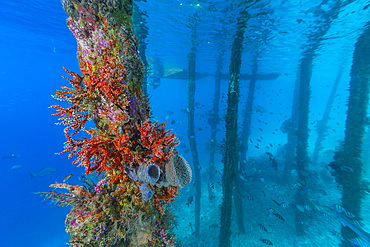
Encrusting sponges, soft corals, and other invertabrates living on pilings on Arborek Reef, Raja Ampa, Indonesia, Southeast Asia, Asia
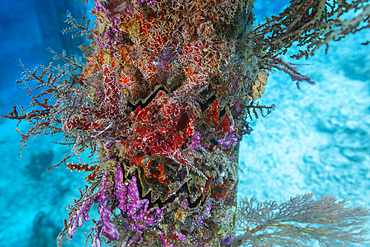
Encrusting sponges, soft corals, and other invertabrates living on pilings on Arborek Reef, Raja Ampa, Indonesia, Southeast Asia, Asia
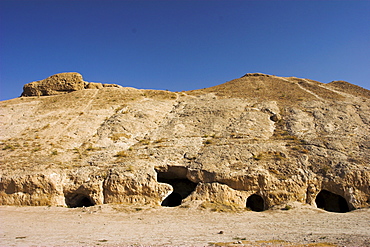
Buddhist caves, living quarters of the monks, in rock-carved stupa-monastery complex dating from the Kushano-Sasanian period, Takht-I-Rustam (Rustam's Throne), near Haibak, Samangan Province, Afghanistan, Asia
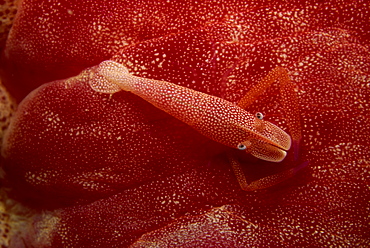
Shrimp living on the skin of a spanish dancer nudibranch, Sabah, Malaysia, Borneo, Southeast Asia, Asia
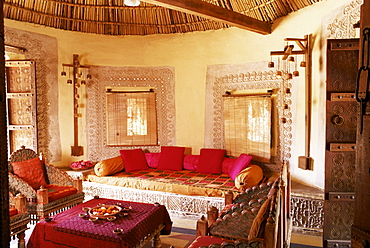
Raised mud reliefs inlaid with mirror on the walls of living area in modern home in traditional tribal Rabari round mud hut, Bunga style, near Ahmedabad, Gujarat state, India, Asia
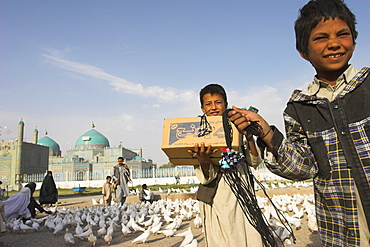
Street boys stand amongst the famous white pigeons with the necklaces they sell to make a living, Shrine of Hazrat Ali, Mazar-I-Sharif, Balkh province, Afghanistan, Asia
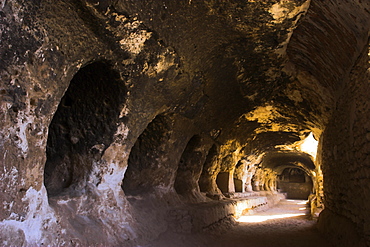
Corridor off which monks' living quarters were carved in cave 2, Takht-I-Rusam (Rustam's throne), part of a Buddhist stupa-monastery complex dating from the Kushano-Sasanian period 4th-5th century AD, Samangan Province, Afghanistan, Asia
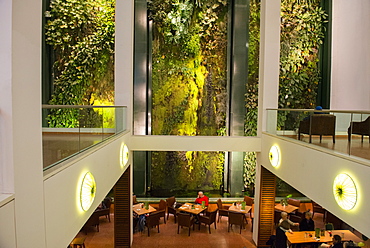
Vertical garden or living wall designed by Patrick Blanc at the Dussman Das Kulturkaufhaus in Berlin, Gemany, Europe
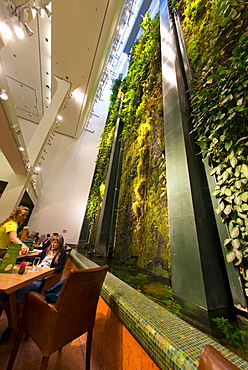
Vertical garden (living wall) designed by Patrick Blanc at the Dussman Das Kulturkaufhaus in Berlin, Germany, Europe

Vertical garden (living wall) designed by Patrick Blanc at the Dussman Das Kulturkaufhaus in Berlin, Germany, Europe
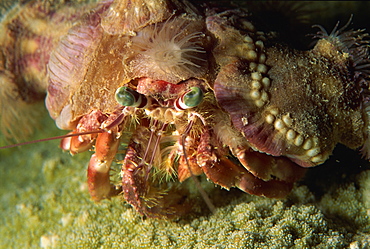
A decorator crab camouflages himself by attaching living sponges and anemones, Sabah, Borneo, Malaysia, Southeast Asia, Asia
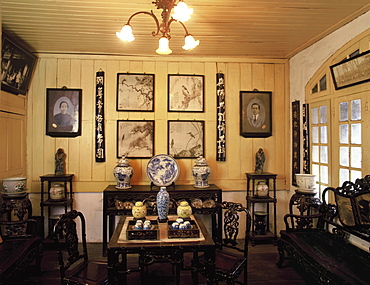
Living room of Diep Dong Nguyen house, built in the 19th centruy by a Chinese merchant, Hoi An, Vietnam, Indochina, Southeast Asia, Asia
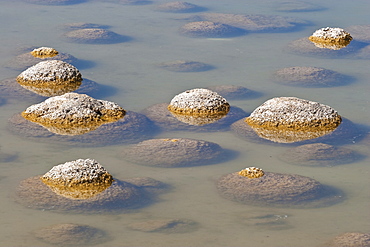
Thrombolites, a variey of microbialite or living rock that produce oxygen and deposit calcium carbonate, similar to some of the earliest fossil forms of life found on Earth, Lake Clifton, Yalgorup National Park, Mandurah, Western Australia, Australia, Pacific
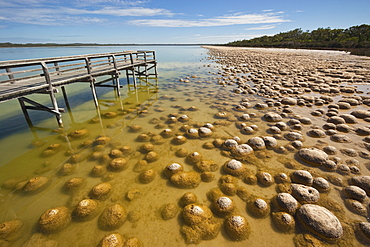
Thrombolites, a variey of microbialite or living rock that produce oxygen and deposit calcium carbonate, similar to some of the earliest fossil forms of life found on Earth, Lake Clifton, Yalgorup National Park, Mandurah, Western Australia, Australia, Pacific
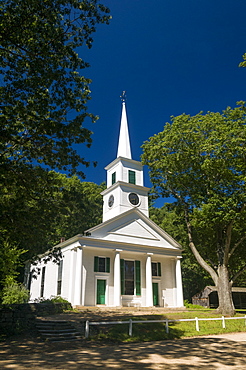
Church at Old Sturbridge Village, a living history museum depicting early New England life from 1790 to 1840 in Sturbridge, Massachusetts, New England, United States of America, North America

Horse drawn stagecoach at Old Sturbridge Village, a living history museum depicting early New England life from 1790 to 1840 in Sturbridge, Massachusetts, New England, United States of America, North America
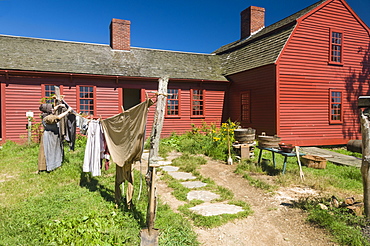
Recreating past times at Old Sturbridge Village, a living history museum depicting early New England life from 1790 to 1840 in Sturbridge, Massachusetts, New England, United States of America, North America
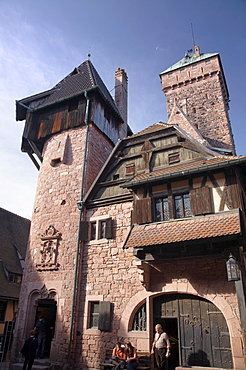
Haut-Koenigsbourg castle, living quarters and the keep from the lower courtyard. An impressive restored medieval castle overlooking the Rhine Plain, Haut Rhin, Alsace, France, Europe
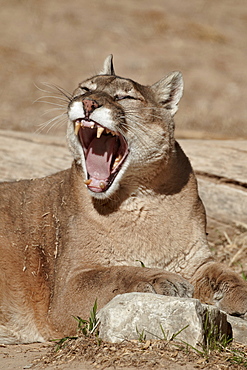
Mountain lion (cougar) (puma) (Puma concolor) yawning, Living Desert Zoo And Gardens State Park, New Mexico, United States of America, North America
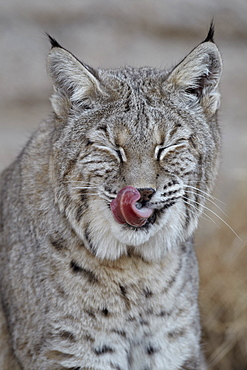
Bobcat (Lynx rufus) with its tongue out, Living Desert Zoo And Gardens State Park, New Mexico, United States of America, North America

Stove and cot in living room of traditional house, Vlkolinec village, UNESCO World Heritage Site, in Velka Fatra Mountains, Vlkolinec, Velka Fatra, Slovakia, Europe

Thrombolites, a variey of microbialite or living rock that produce oxygen and deposit calcium carbonate, similar to some of the earliest fossil forms of life found on Earth, Lake Clifton, Yalgorup National Park, Mandurah, Western Australia, Australia, Pacific
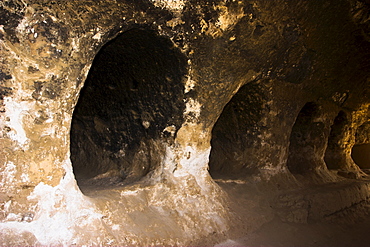
Corridor off which are monks' living quarters, Cave 2 of Buddhist caves in rock-carved stupa-monastery complex dating from the Kushano-Sasanian period, Takht-I-Rustam (Rustam's Throne), near Haibak, Samangan Province, Afghanistan, Asia

Corridor off which monks' living quarters were carved in cave 2, Takht-I-Rusam (Rustam's throne), part of a Buddhist stupa-monastery complex dating from the Kushano-Sasanian period 4th-5th century AD, Samangan Province, Afghanistan, Asia

Interior of Rydal village church, William Wordsworth was churchwarden here whilst living at Rydal Mount, Lake District, Cumbria, England, United Kingdom, Europe
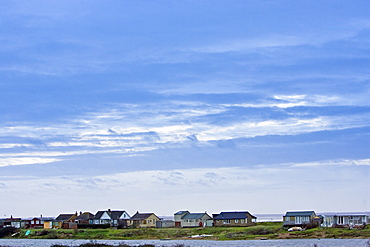
Holiday cottages along The Wash estuary in Snettisham, North Norfolk coast, East Anglia, England, United Kingdom

Old Sturbridge Village, a living history museum depicting early New England life from 1790 to 1840 in Sturbridge, Massachusetts, New England, United States of America, North America
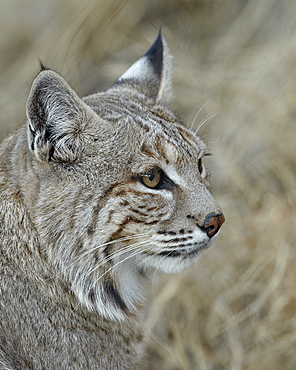
Bobcat (Lynx rufus), Living Desert Zoo And Gardens State Park, New Mexico, United States of America, North America
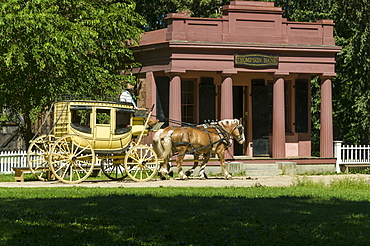
Horse drawn stagecoach at Old Sturbridge Village, a living history museum depicting early New England life from 1790 to 1840 in Sturbridge, Massachusetts, New England, United States of America, North America

Desolate and rocky east coast of South Harris, where people were forced to make a living after the Clearances, South Harris, Outer Hebrides, Scotland, United Kingdom, Europe

Street boy who sells necklaces for living and ladies in burquas, Shrine of Hazrat Ali, Mazar-I-Sharif, Afghanistan, Asia

Mother and daughter stand in temple doorway at Kumari (living goddess) festival, Durbar Square, Kathmandu, Nepal, Asia
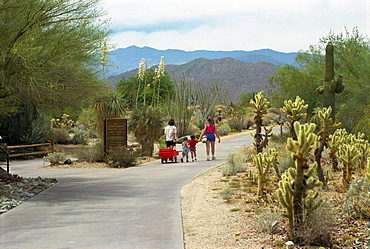
Information park called The Living Desert, Palm Springs, California, United States of America, North America
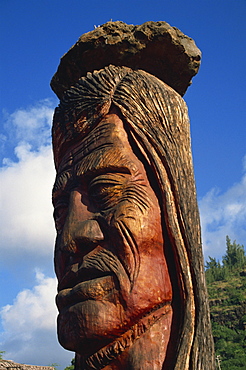
Carving honours living and ancient native Hawaiians, Pohaku Loa, Maui, Hawaiian Islands, United States of America, Pacific, North America
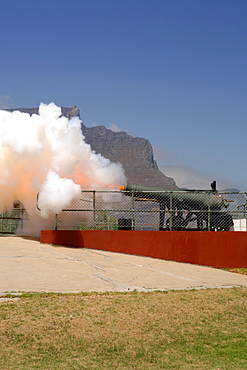
The noon gun firing in Cape Town.
The daily noon gun is Cape Town’s oldest living tradition and the two cannons used are the oldest guns in daily use in the world. They have marked the midday hour in the mother city in this distinctive, albeit noisy manner since early 1806. The cannons were cast in Britain in 1794 and still bear the royal crest of King George the third. The firing of the cannon was originally to give ships in the bay a means of re-setting their clocks accurately.

View of one of the two noon guns at Lion Battery on Signal Hill in Cape Town.
The daily noon gun is Cape Town’s oldest living tradition and the two cannons used are the oldest guns in daily use in the world. They have marked the midday hour in the mother city in this distinctive, albeit noisy manner since early 1806. The cannons were cast in Britain in 1794 and still bear the royal crest of King George the third. The firing of the cannon was originally to give ships in the bay a means of re-setting their clocks accurately.
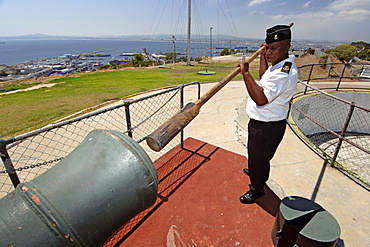
Chief Petty Officer Dudley Malgas using a wooden ram rod to push the charge into the muzzle of the noon gun cannon in Cape Town.
The daily noon gun is Cape Town’s oldest living tradition and the two cannons used are the oldest guns in daily use in the world. They have marked the midday hour in the mother city in this distinctive, albeit noisy manner since early 1806. The cannons were cast in Britain in 1794 and still bear the royal crest of King George the third. The firing of the cannon was originally to give ships in the bay a means of re-setting their clocks accurately.

Chief Petty Officer Dudley Malgas of the South African Navy posing alongside the noon gun cannon in Cape Town. CPO Malgas has been in charge of firing the canon since 1995.
The daily noon gun is Cape Town’s oldest living tradition and the two cannons used are the oldest guns in daily use in the world. They have marked the midday hour in the mother city in this distinctive, albeit noisy manner since early 1806. The cannons were cast in Britain in 1794 and still bear the royal crest of King George the third. The firing of the cannon was originally to give ships in the bay a means of re-setting their clocks accurately.
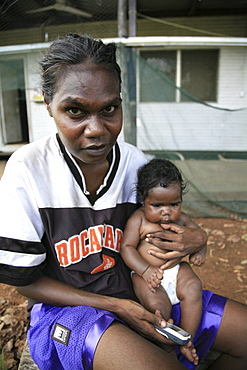
Australia mother and child living in aborigine community of , or beswick, arnemland, northern territory

Woman carrying wood to be used as fuel for cooking by Nepalese locals living in the Annapurna Himalayas, Nepal, Asia
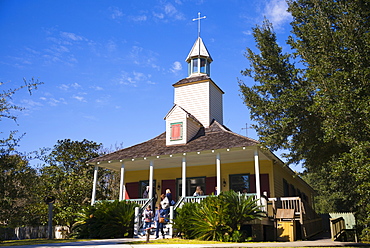
Tourists at Church at Vermilionville living history museum of Acadian (Cajun), Creole and Native American culture, Louisiana USA
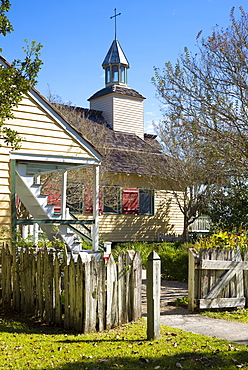
Church at Vermilionville living history museum of Acadian (Cajun), Creole and Native American culture, Lafayette, Louisiana, USA

The Black House village at Garenin near Carloway on the Isle of Lewis, Outer Hebrides, Scotland, UK. These ancient traditional houses have been preserved, after they were abandoned finally in the 1970's until then people were living in them.

Living room interior at the winter estate home, Seminole Lodge, of famous inventor Thomas Edison at Fort Myers, Florida, USA
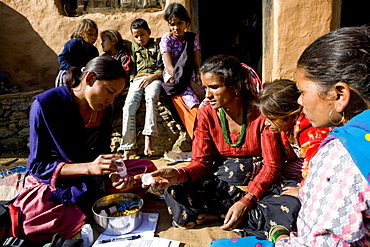
Community and home based care service is one of the critical care and support services provided to people living with HIV in Nepal. CHBC Teams provide basic health services, social, emotional and spiritual support, reinforcing the concept of ?positive living? and reducing stigma and discrimination in the community. Doti, Nepal

Women carrying wood to be used as fuel for cooking by Nepalese locals living in the Annapurna Himalayas, Nepal, Asia
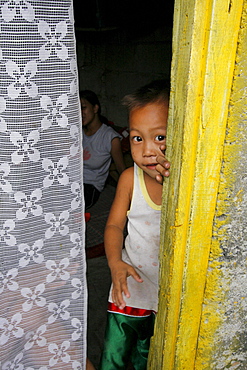
Philippines child living in a shantytown dwelling near garbage tip at bagong silangan, quezon city, manila
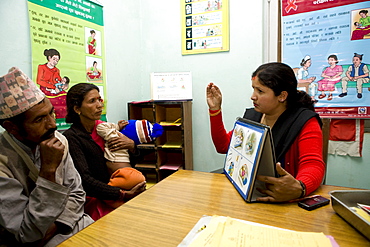
Community and Home Based Care (CHBC) teams also provide comprehensive care and support services including Prevention of Mother to Child Tansmission (PMTCT). Dhangadi, Nepal
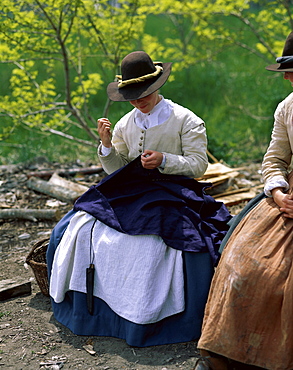
Woman in 17th century costume doing needlework, Plimouth Plantation Living Museum, Plymouth, Massachusetts, New England, United States of America, North America
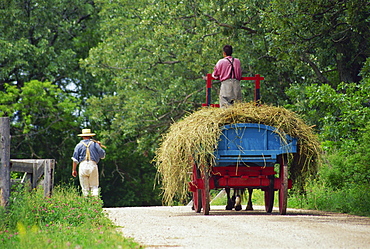
Koepsell Farm, Old World Wisconsin Living History Museum, Eagle, Milwaukee, Wisconsin, United States of America, North America
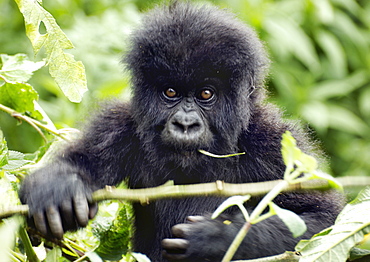
Baby Gorilla living in the mountains of the Volcanoes National Park, Rwanda. Chewing on a leaf and negotiating a branch in front of them. Volcanoes National Park, Virunga mountains, Rwanda, East Africa

Metallic Shrimp Goby (Amblyeleotris latifasciata) and Threadfin Dartfish, (Ptereleotris hanae) together living in the same hole. Gorontalo, Sulaweis, Indonesia
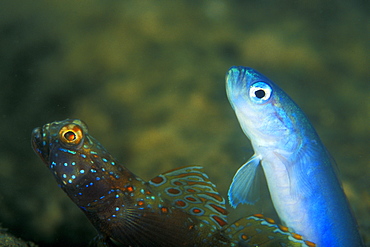
Metallic Shrimp Goby (Amblyeleotris latifasciata) and Threadfin Dartfish, (Ptereleotris hanae) together living in the same hole. Gorontalo, Sulaweis, Indonesia

Redmouth Grouper (Aethaloperca rogaa) Showing its namesake bright red inside mouth. Can often be found living amongst colonies of Yellow Sweeper (Parapriacanthus ransonneti) which it vigorously protects from attack by passing jacks, in return for feeding from the same glassfish colony. Red Sea.

Redmouth Grouper (Aethaloperca rogaa). So named because of its bright red inside mouth. Can often be found living amongst colonies of Yellow Sweeper (Parapriacanthus ransonneti) which it vigorously protects from attack by passing jacks, in return for feeding from the same glassfish colony. Red Sea.
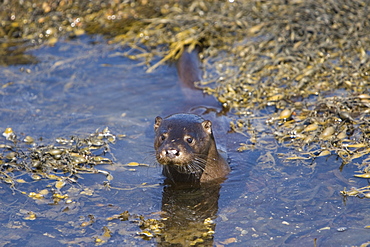
Eurasian river otter (Lutra lutra) foraging in and among the seaweed. Otters on Scotland's west coast and islands have adapted well to making a living in the marine environment. Hebrides, Scotland

Redmouth Grouper Ò Aethaloperca rogaa Ò So named because of its bright red inside mouth. Can often be found living amongst colonies of Yellow Sweeper (Parapriacanthus ransonneti) which it vigorously protects from attack by passing jacks, in return for feeding from the same glassfish colony.
